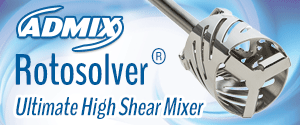Herma cuts environmental footprint with release liner recycling
Self-adhesive label specialist Herma recycled some 185 tonnes of surplus release liner from its material production process through a Europe-wide recycling initiative in 2012, helping it offset the carbon emissions from its 74-strong fleet of cars last year.
Silicone-coated release liner is encountered wherever labels are applied, and in large quantities in the consumer goods, food and logistics industries. It is conventionally discarded as general refuse.
Thanks to the cooperation of European release liner recycling organization Cycle4Green (C4G) and Austrian paper manufacturer Lenzing Papier, waste raw materials are recovered and used to produce new label paper and release liner, both of which are used by Herma.
A certificate from C4G shows that Herma committed around 185 tonnes of surplus liner from its self-adhesive material production to the silicon-coated release liner recycling initiative in 2012.
Compared with recycling, manufacturing the same quantity from virgin fiber would have increased carbon dioxide emissions by 428 tonnes.
Dr Thomas Baumgärtner (pictured, top), managing director of Herma, and head of its self-adhesive materials division, said: ‘Last year, Herma’s entire fleet generated about 410 tonnes of carbon dioxide, based on the vehicles’ imputed mileage and realistic average consumption figures.
‘We can therefore claim a carbon-neutral footprint for the 74 Herma cars. Given that we produce only a fairly small quantity of waste liner – because it is a constituent of our self-adhesive materials – achieving carbon neutrality is an impressive achievement.
‘It illustrates that even relatively small-scale recycling can make a big impact.’
In 2010, Herma became the first self-adhesive material specialist in the industry to participate in the C4G initiative, which was established specifically for this type of recycling. The quantity of release liner collected by C4G throughout Europe in 2012 reduced carbon dioxide emissions by around 7,000 tonnes.
Across the EU, the annual consumption of silicone-coated release liner stands at about 360,000 tonnes. The largest portion is attributable to companies that apply labels.
‘The potential carbon dioxide savings are therefore enormous,’ adds Baumgärtner.
‘That’s why we take every opportunity to encourage our self-adhesive material customers, namely the label printers, to point their own customers towards the C4G recycling initiative. It makes good sense for both the climate and the participating companies, which would otherwise have to bear the cost of disposing of the release liner.’


































